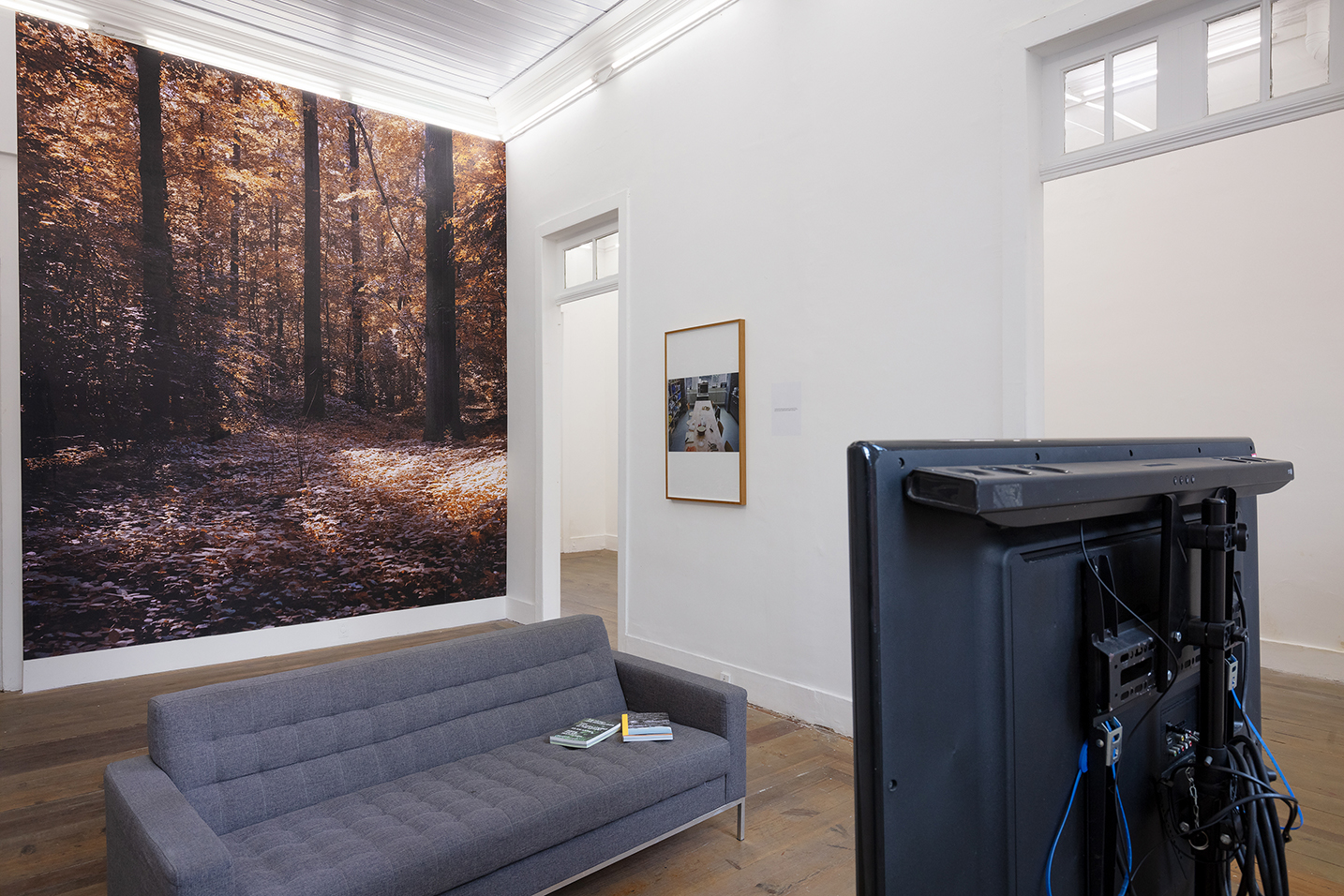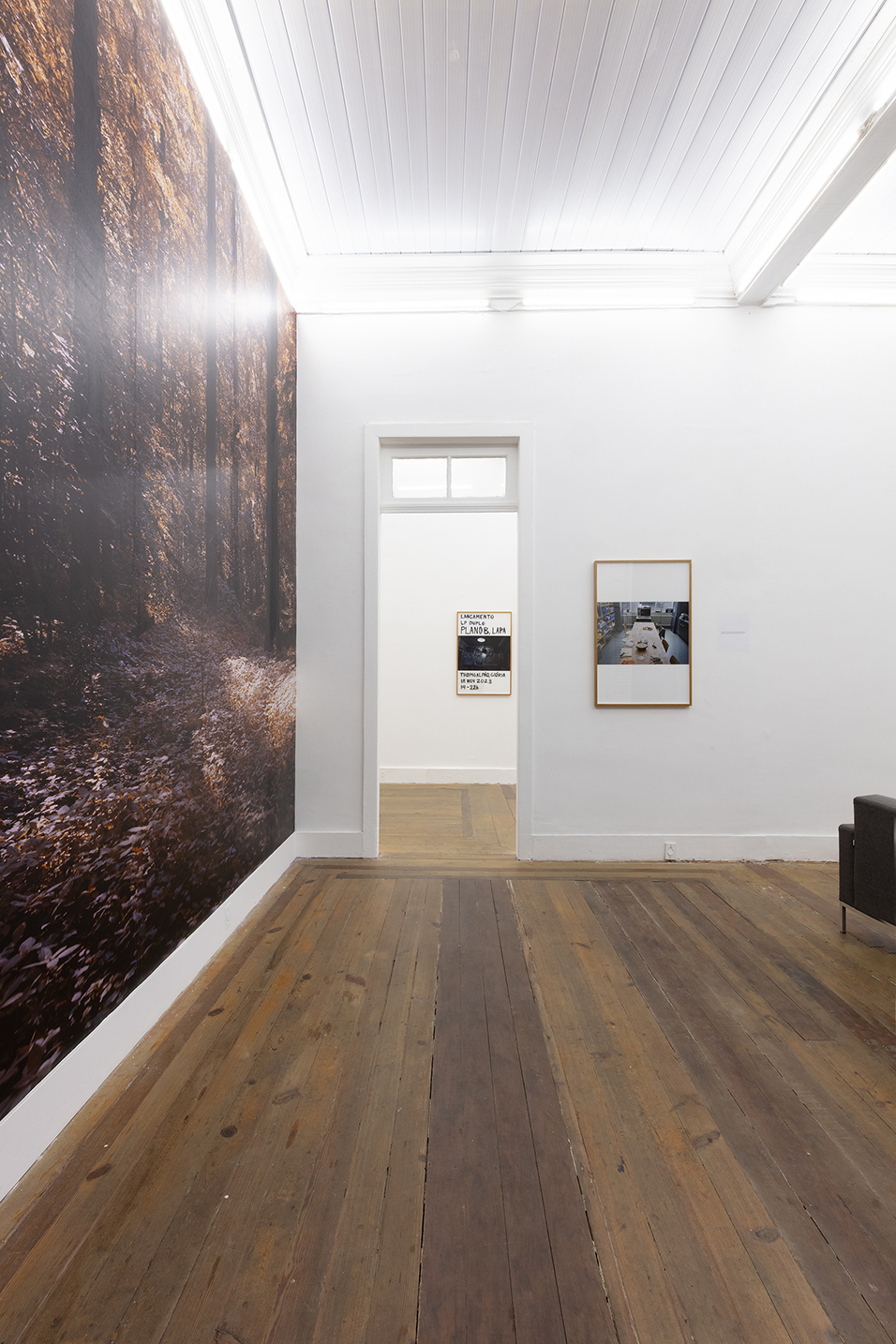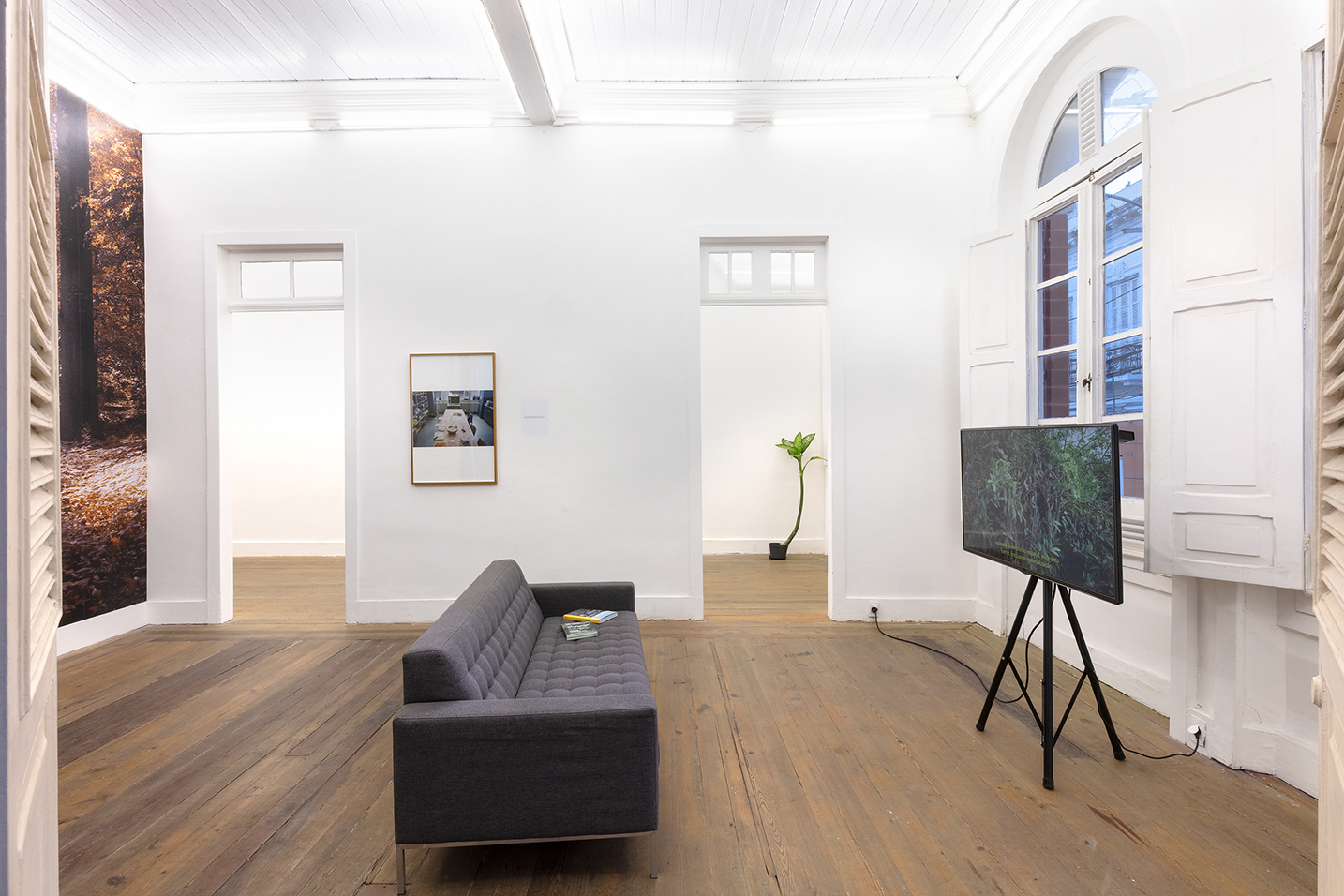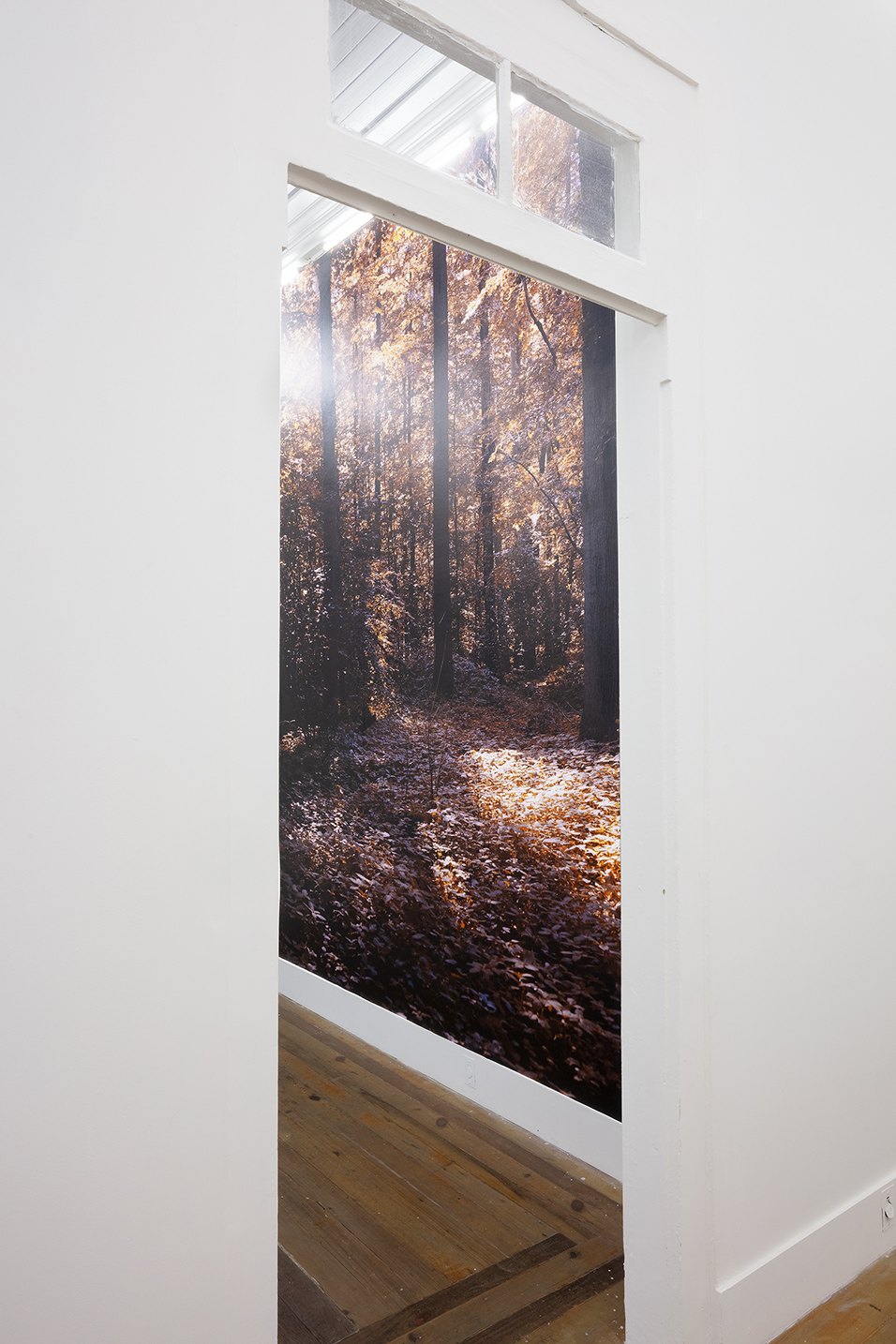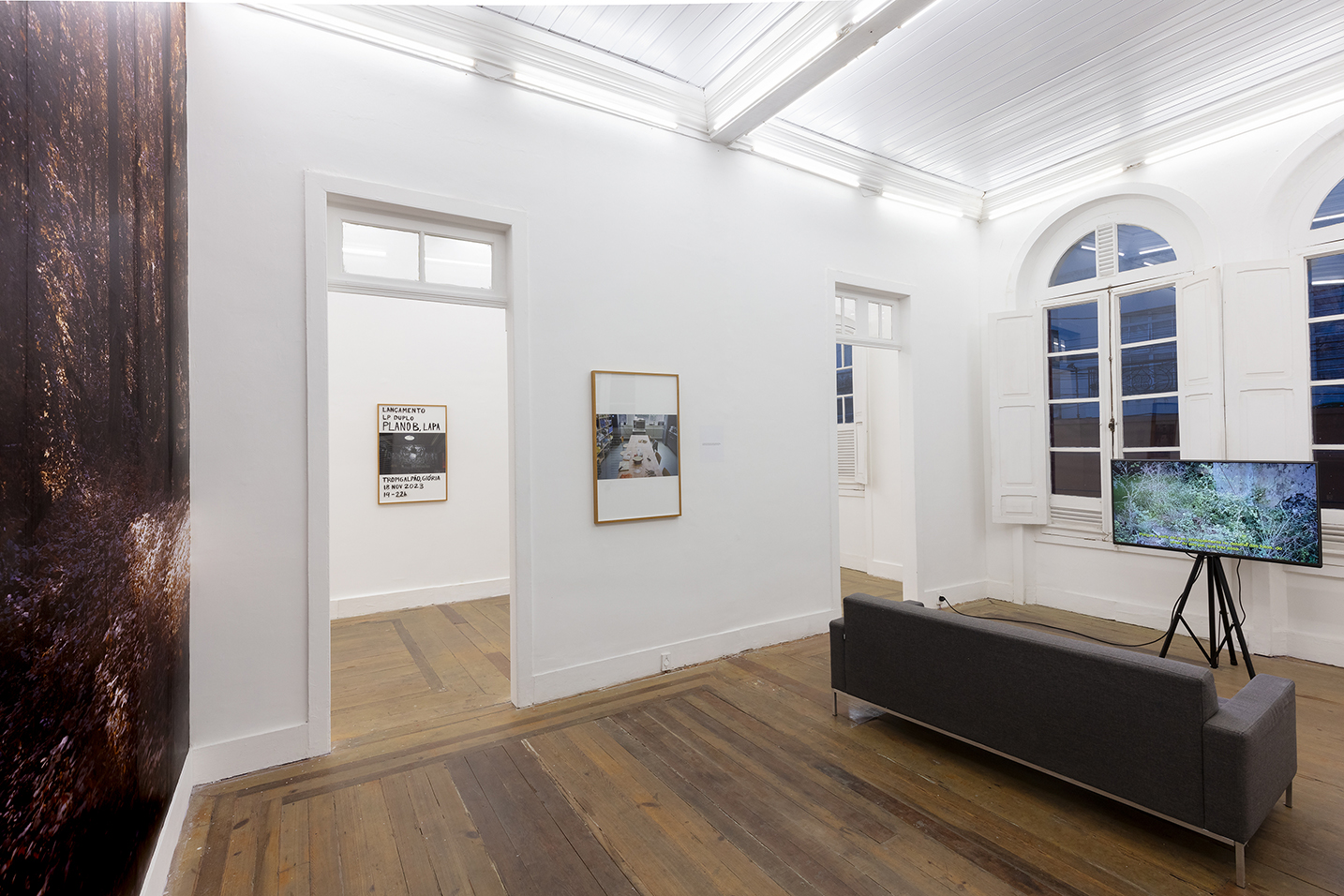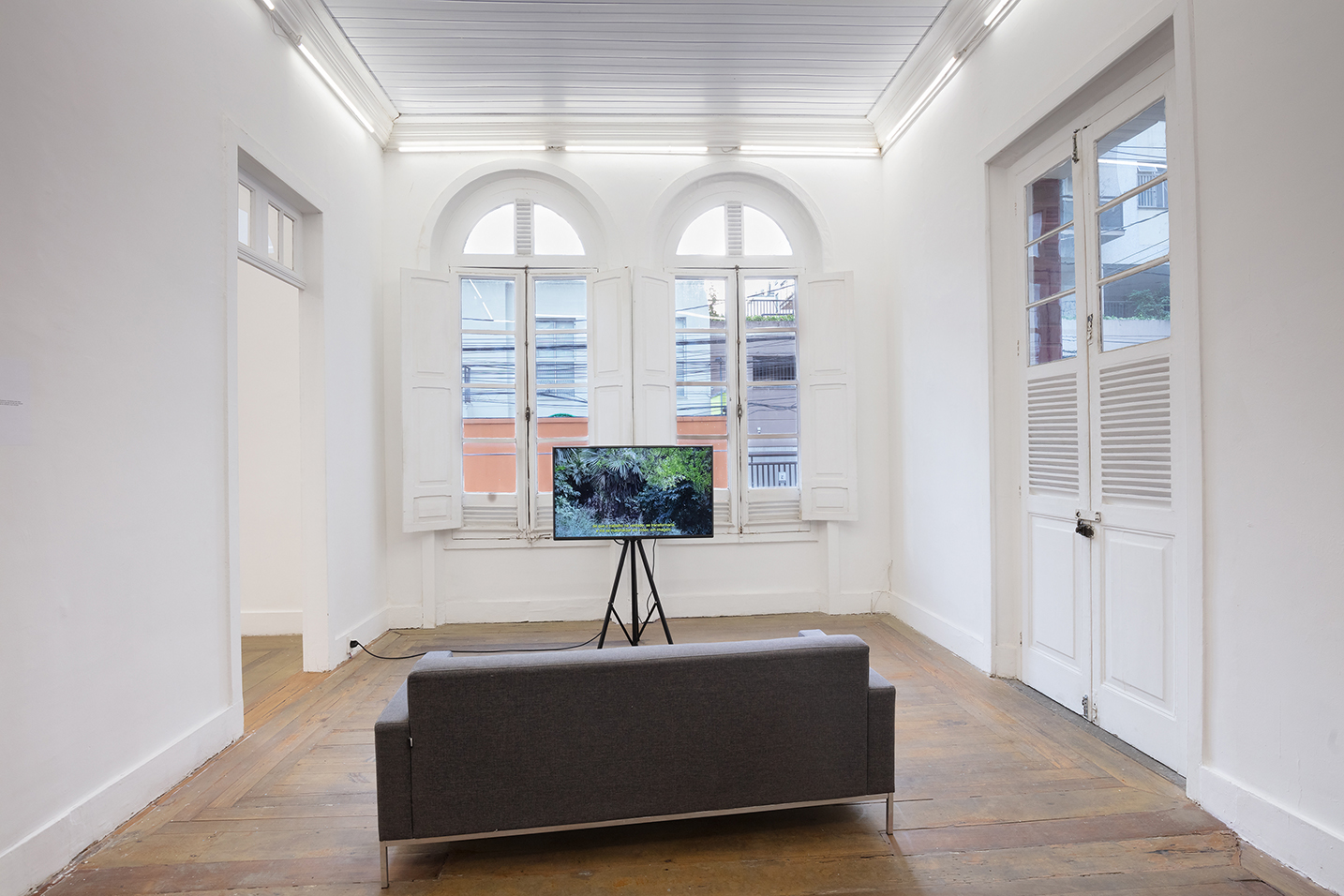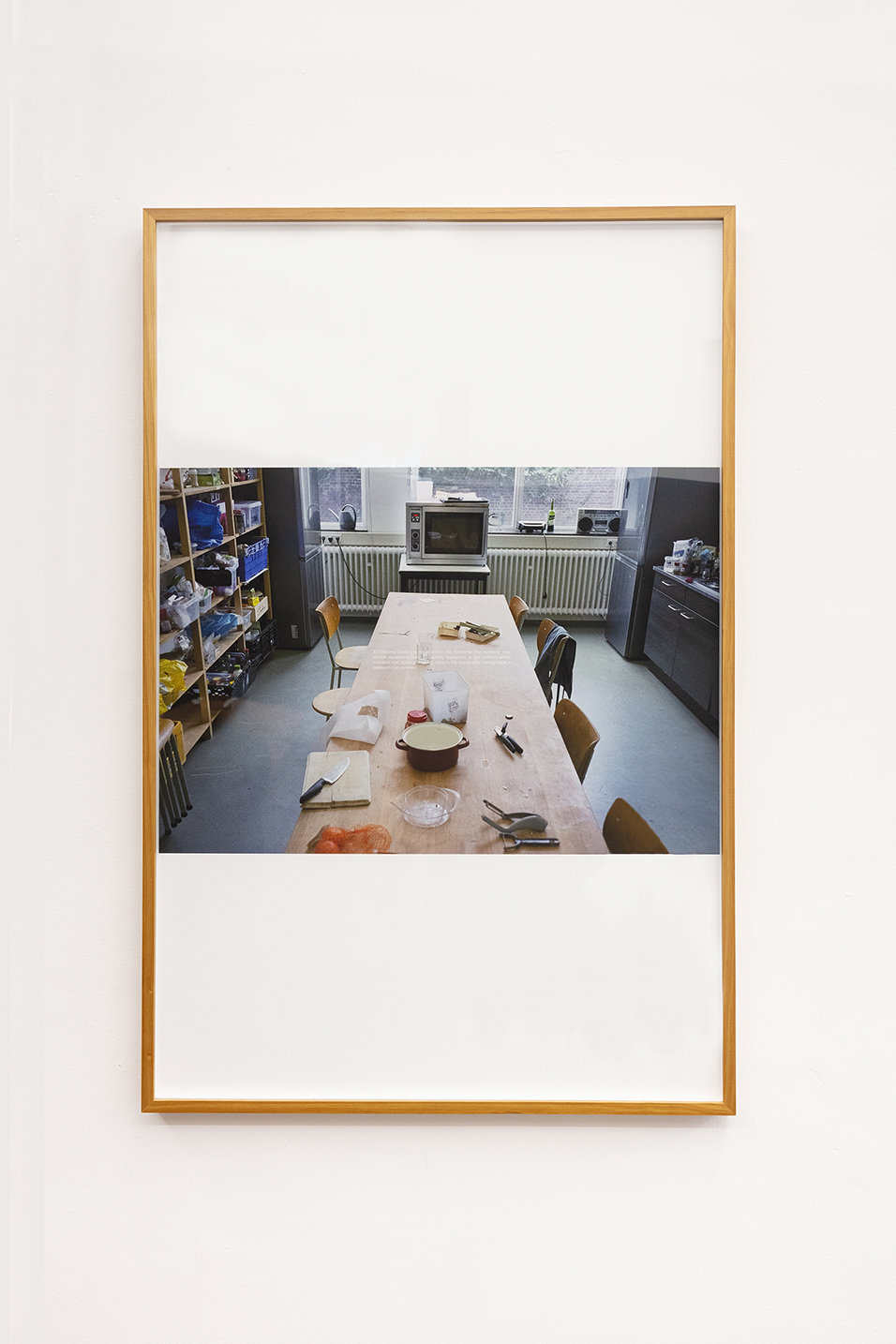Vijai Maia Patchineelam
Sala de Espera
Rio de Janeiro | November 09, 2023 — January 13, 2024
Halfway through the first year of the COVID-19 pandemic while catching up in a phone conversation with friend and artist Stefano Faoro, we inevitably ended up reminiscing about our time together as participants of the Jan van Eyck Academy. Our talk moved along the usual thread of how these exchanges tend to go. Nothing out of the ordinary. At the tail end of our conversation, while we shared some of our stories about failed expectations from those days, we attempted to calculate between the two of us the number of years taking part in different art residencies and post-academic programs. Stefano went on to question what was that we got out of it after the realization of having spent the better part of our late twenties and early thirties going through several art institutions, mostly in northern European countries. At that moment we found ourselves with very little to show in matter-of-fact economic terms as well as from the promise of the ensuing opportunities that never seem to fully materialize after participating in what some deem as prestigious art institutions. All of that which was being said was underlined by our apprehension due to the given uncertainties of the immediate future we faced and still do—pandemic-wise, the reality of climate crisis and the imminent political instability as consequence.
The years of experience being inside art institutions, beginning from the effort exerted to be accepted in order to develop one s practice, then the experience of going through them and while in them the many ways of having to learn how to be inside, has in several ways informed the development of my practice as an artist—for the good or the bad. Making this publication has been an attempt at uncovering and facing, rather than avoiding, the tensions that are part of what defines the relationship between artists and art institutions, and especially at a time when most art institutions themselves are under the pressure of austerity politics. In this publication I have documented the different stages of the development of the doctoral research, The Artist Job Description: A Practice Led Artistic Research For the Employment of the Artist, as an Artist, Inside the Art Institution, all the while exposing vital moments of learning that as a consequence has led to the transformation of my artistic practice. One of these moments was the refusal to frame the informal kitchen at the Jan van Eyck Academy into an artwork, which allowed the act of running a kitchen out of an artist studio to remain a structural proposal in relation to the institution. Consequently, the act of refusal triggered the transformation of my artistic practice into an institutional practice. An institutional practice that is indebted to artistic thinking and subsequently looks for non-administrative ways of organizing within administrative structures to become a speculation into the plasticity of institutional structures as a potential for co-creation between artists and institutions.
In order to chart both the development of the research and the aforementioned transformation, I made use of public moments to generate textual material for this publication. I deliberately chose to work with transcribed public presentations and conversations to Hi keep text close to the spoken word, as a way to expose important moments of learning to the reader. With the episode of the informal kitchen in addition to the transcribed artist talk, it was important to reenact that experience in a conversation with others to broaden the understanding of the events leading up to and the consequences of the provisional kitchen. The publication then moves on to the editorial project Samba Shiva, via another transcribed talk, it rearticulates some of the lessons collected from the experience with the informal kitchen into a new institutional setting of the Instituto Moreira Salles. It was personally important to me in moving forward and making sure that my practice would relate non-antagonistically to the new institution—hopefully without losing its critical edge in the process.
What I did bring over from the episode of the informal kitchen to the editorial project Samba Shiva, was a better understanding of the space and the role afforded to artists and the expectations placed upon artists by institutions. This space/role in which an individual artist’s whim is incorporated so long as the expectations of an artistic outcome from the artist are met and/or made presentable. So, a way to go about it was to occupy this space/role but instead of looking to thrive in it, I had to learn to disappoint the institution’s expectations and to cope with the flip side of the disappointment myself. In a counterintuitive manner, this process of challenging the institutional protocols opened a way to experiment and test the invisible boundaries of that said space/ role within the institution. In Maastricht, it came about challenging the new institutional order defined by larger neoliberal economic forces that manifested itself as the recently renovated artist studio. This I did by not using the studio for art production and by refusing the institution’s suggestion of presenting the informal kitchen as an artwork in relation to the frame of their public pro- 14( gram open studios. With Samba Shiva, it was not so much about disappointing the institution itself as the collaboration with the institution opened up the space for dialogue. I like to think that this collaboration was able to challenge to a certain degree the mechanism of legitimization that institutional frames are traditionally designed to emphasize. This was achieved in part by rethinking authorship, avoiding complete appropriation of what is made outside of the professional art field, and by giving due credit to various collaborators. As a result, re-ascribing the potential visibility given by a prestigious art grant and certain beliefs surrounding the relationship between authorship and the artist.
Being able to and willing to play with certain preconceptions of what being an artist entails and what constitutes an art practice, was a necessary step towards gaining some leverage when negotiating with institutions — testing the aforementioned potential plasticity of the institution. On the other hand, while experimenting with aspects of this research in the editorial project Samba Shiva, I was made aware of the consequences of what was proposed with this research in relation to staff and employees of institutions burdened with additional work required to review and perhaps modify established institutional procedures. At that moment, from the position in which I came into the institution, I was forced to reflect on the ramifications of intervening in institutional procedure, and used this insight for my own employment as an artist-researcher developing a PhD in the Arts.
Being employed part-time at the Royal Academy of Fine Arts Antwerp played an important role in the development of the research, as I was able to root myself in an institution before going into another to research. The four-year period provided the economic stability that in turn allowed me the time, headspace,and resources to dedicate myself to the research and take chances with it. At a later moment, once aware and made comfortable inside an educational setting, I began to involve myself and engage in different activities pertaining to teaching, advising and others. And to look at the liberty that I was afforded as an artist-researcher to raise discussion surrounding politics, race, class, and gender which in my opinion the institution did not address with the urgency these issues demand. One such engagement is the organization of the research seminar Description Changes, The Artist Job Description, which follows the first part of this publication. With the seminar I aimed to gather peers in order to think and to work together towards strategies to negotiate other ways of entry and being in art institutions. Perhaps, more importantly, to have my peers remind me that to be invested in an institution does not have to always render into attitudes that reaffirm the institution, in some cases, it can also come in the form of a complaint.
[…] To conclude this afterword, I would like to consider once more what it meant to have gone through these institutions over the years, if not for a palpable return, then perhaps an understanding of the role of artists inside art institutions that is on one hand critical and the other generative. An understanding that is sensitive ^1 to the potential knowledge of the artist concerning how things are done inside the art institution. Folded into that understanding is the awareness that the working conditions for artists, more often than not, correlates to how institutions respond when under the pressure of imminent budget cuts or otherwise. With that being said, how do we artists claim a certain degree of autonomy inside and in relation to these institutions that is necessary to continue to develop our practices, make a living and contribute towards a communal responsibility of preserving the diversity for the healthy functioning of the art field?
